How to Master Double Exposure in Photoshop
-
Add to
favorites
-
DifficultyMedium
-
Length1.5 hours
-
Videos9
-
Software
description
Double exposures have come a long way since the early days of film. With Photoshop, we can quickly and easily combine multiple exposures to help tell the story of our travels, capture a bride and groom with the romantic environment of their wedding, or create out-of-this-world conceptual images that stretch our creativity.
In this tutorial, we start with the basics of what makes a double exposure work and how you can find and capture the best possible images to blend together. Then we walk you through several examples, combining two, three, and up to four different images. Learn to master Blending Modes, Smart Objects, Layers Masks, and more!
THIS COURSE INCLUDES
- 21 Sample Images
Share
Table of Contents
-
01 - Introduction to Double Exposure1:05m
-
02 - How to Create Effective Double Exposures4:19m
-
01 - Create a Double Exposure using Blending Modes14:41m
-
02 - Create a Themed Double Exposure with Gradient Layer Masks10:13m
-
03 - Create a Double Exposure with Color & Dramatic Effects4:18m
-
04 - Create a Multiple Exposure Portrait with Water10:04m
-
05 - Create a Man and City Double Exposure Portrait11:45m
-
06 - Create a Multiple Exposure Portrait with a Forest and Trees18:33m
-
07 - Create a Multiple Exposure Portrait with Stars12:35m
Course Downloads
Master Double Exposure
What is a Double Exposure?
While some of the methods for getting a double exposure effect have changed, the definition remains the same. With film, you can take a photo and then, without advancing the film, take another. This results in two images being exposed on the same piece of a film, creating a creative combination. Photoshop gives us the ability to do the same thing with any two (or more photos), with more options and precision than ever before.
Double Exposure Editing in Photoshop
In this tutorial, we show you how to make a double exposure in Photoshop using powerful tools and techniques. Learn to use blending modes, layer masks, smart objects, and more to make stunning double exposures that look both creative and professional.
Multiple Exposures with No Limits
The techniques you will learn in this tutorial are just the tip of the iceberg. Once you’ve mastered these concepts, you can go on to create amazing looks and styles that are all you’re own. Combine this tutorial with How to Master Photoshop Actions, and you can create a tool to automate your double exposure process. You can even use these techniques when editing video using the Photoshop video timeline to create stunning animations and cinemagraphs.
Work Through Multiple Examples
Come work with us through seven examples, where we combine two, three, and even four images together. We begin with some simple images to illustrate how each tool and technique works. Then we introduce more exciting and challenging effects that will surely get your creative juices flowing.
Tips for Photography & Photoshop
You can blend images with stock photos, your own images, or a combination of the two. No matter where you’re getting the photos from, we break down what to look for in order to make an effective double exposure. We also cover some important tips to keep in mind for multiple exposure photography and capturing your own pictures to put together.
Blending Multiple Exposures
The techniques in this tutorial will provide everything you need to pull images together in Photoshop. Whether you’re combining two images or ten, we show you how to pull elements from multiple sources to integrate into your final photo.
Develop Themes & Ideas
The best part of combining images is the creativity that comes with designing a theme or expressing an idea. Whether you just want to create something original and weird, or you want to wow a client with an exciting new way to communicate a product, event or idea, multiple exposures can make it happen.
Double Exposure Portraits
Tell a story about your subject by combining an photo of them with another photo that helps reinforce the tone that you’re going for. Taking a portrait of a bride and groom? Combine that exposure with pictures of flowers, decorations, and the location of the wedding. Going for something more conceptual? Combine a portrait with images of epic landscapes and rich textures.
Double Exposure Landscapes
From dense forests, to a shining cityscape, to a star-filled sky, landscape images are perfect for combining with other photos in Photoshop. We’ll show you how to integrate elements from a landscape into another picture, such as making buildings pop out of a top hat or blending trees seamlessly with hair.
Create Powerful Effects
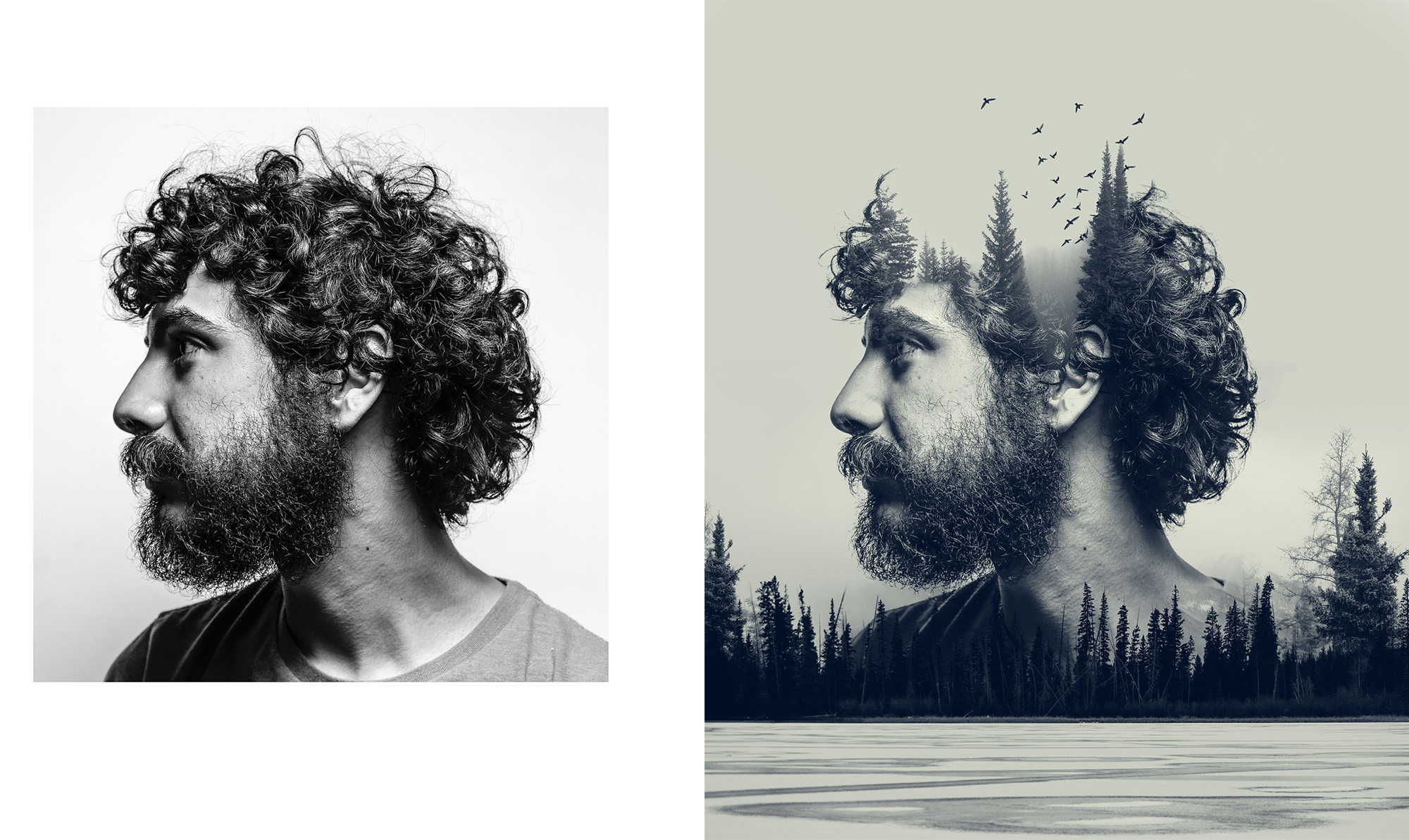
Combine Multiple Images
Let your imagination run wild as you blend multiple images together seamlessly to create something uniquely you.
Double Exposures & Color
Color is a powerful tool for establishing a style and mood. It is also extremely helpful when pulling a composite image together. In this tutorial, we show you how to use color to help nail your theme and combine several images in a seamless and effective way.
Working in Black & White
The best types of photos for creating multiple exposures are also some of the best types of photos for creating memorable black and white images. Learn to identify and take advantage of high-contrast pictures with well-defined shapes and textures that are perfect for combining in Photoshop.
Dreamy & Surreal Effects
Making a multiple exposure image is a great way to get creative with your images. Once you understand the process for effectively blending photos, you can combine these techniques with other conceptual effects like levitation and advanced compositing.
Blending Modes
Blending Modes in Photoshop make creating and editing double exposure images possible. Quickly and easily isolate the areas of light or dark in an image that you want to be visible. Better yet, we’ll show you how to improve the effectiveness of Blending Modes by combining them with Layer Masks and Levels Adjustment Layers. For more a more in-depth look, check out our PRO tutorial How to Master Blending Modes in Photoshop.
Smart Objects
Making a beautiful and original photo using multiple exposures will often require a lot of experimentation. Learn to use Smart Objects to work non-destructively and quickly make any adjustments to a layer without ever worrying about those adjustments being locked in.
Layer Masks & Adjustment Layers
In order to help our double exposures look their best, we need to use some tools to help refine our work and make sure that we’re only integrating the parts of a photo that we want. Learn to use Adjustment Layers to make Blending Modes more accurate and then use Layer Masks to clean-up any areas for a seamless final image.


Aaron Nace
PHLEARN Founder
Aaron Nace is a photographer, Photoshop artist and founder of PHLEARN. He is the #1 Photoshop instructor in the world with millions of YouTube subscribers.
Reviews
New & Popular Tutorials
Training Site in
the World
Tutorials!
Ratings
and Counting
Subscribers
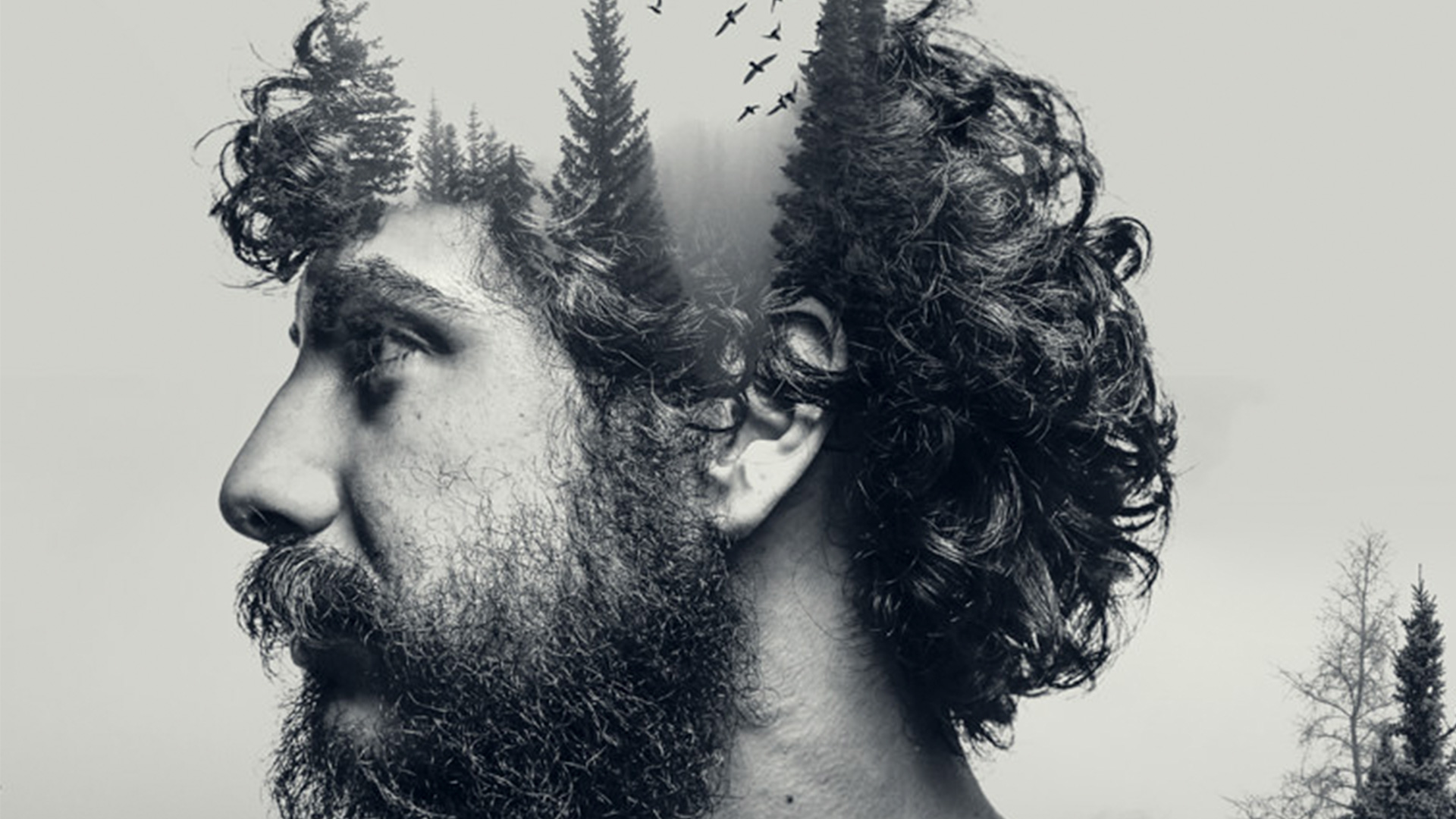

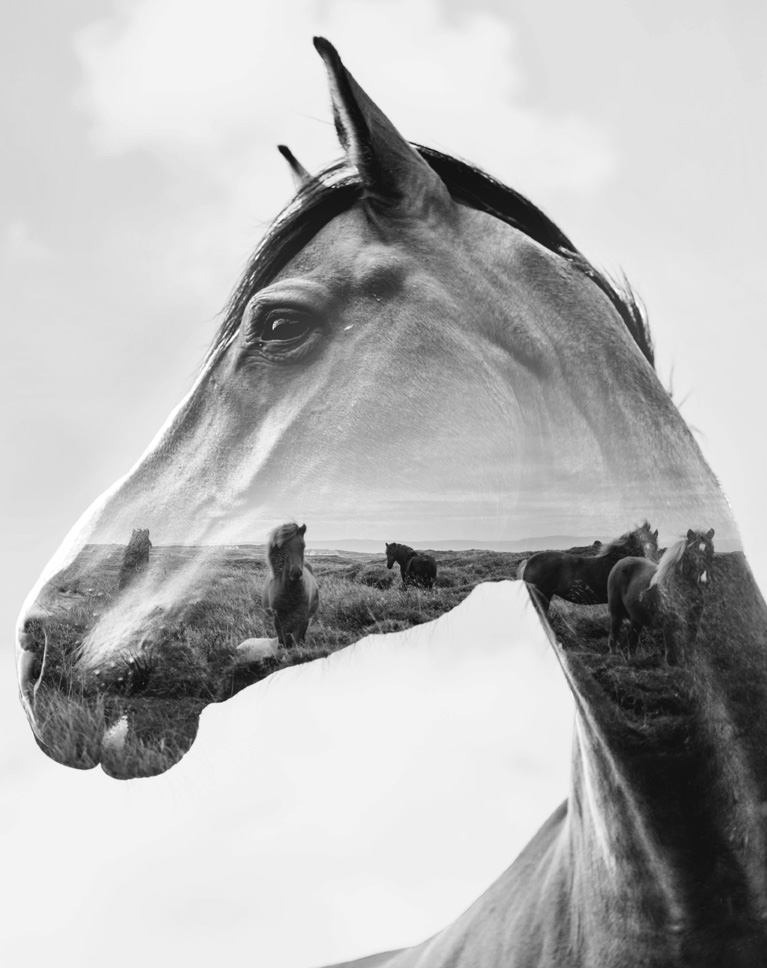
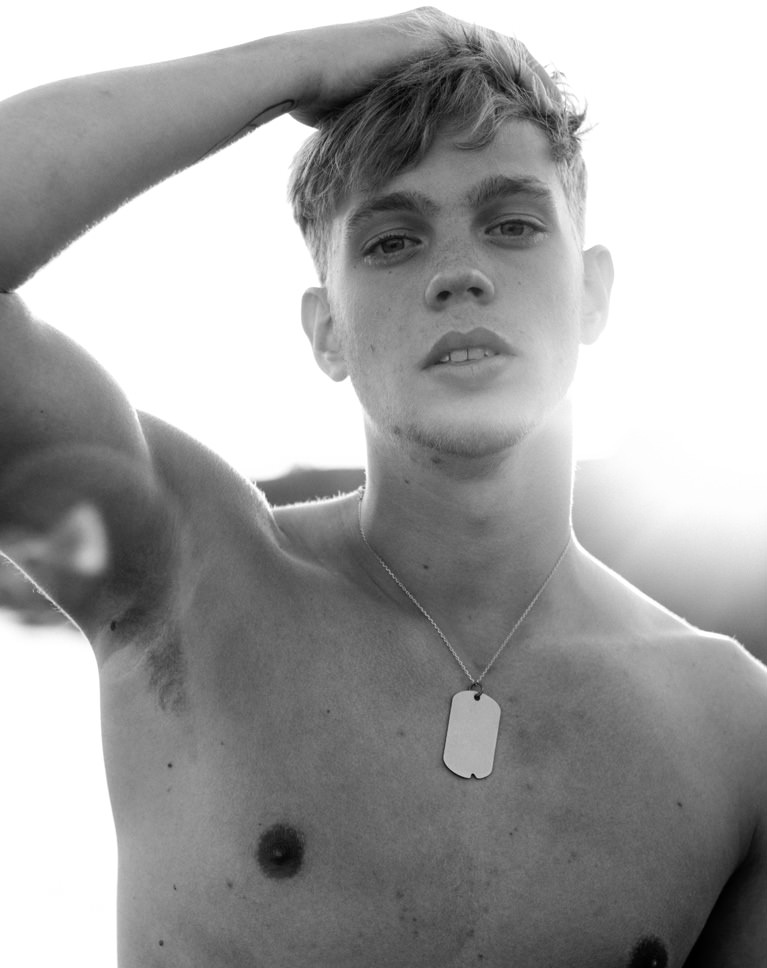
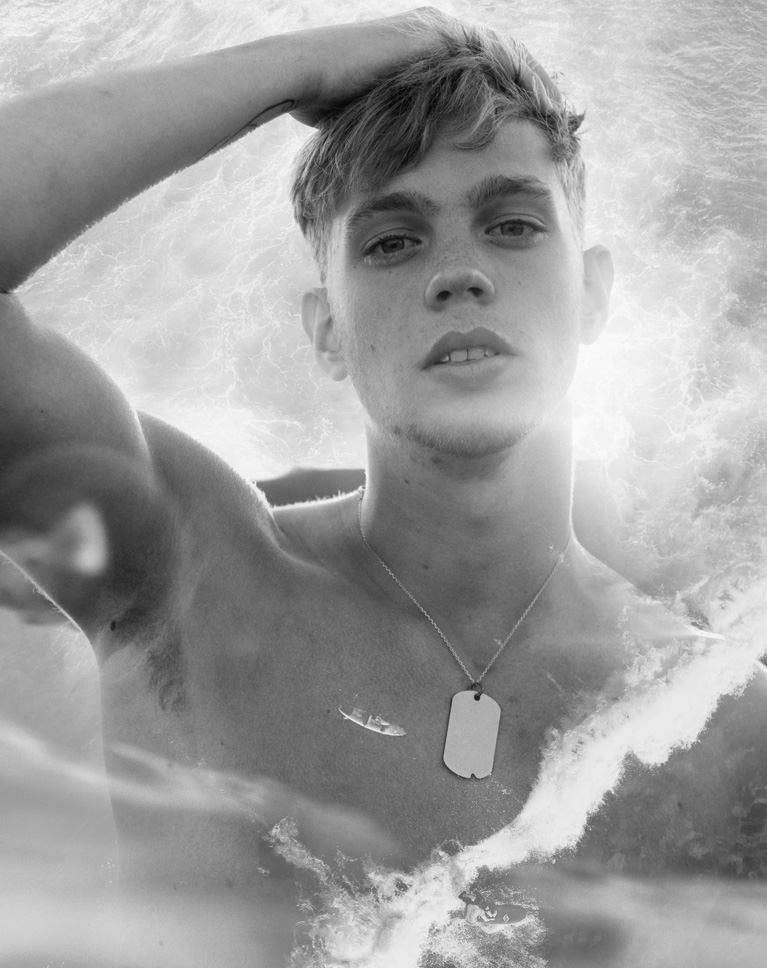

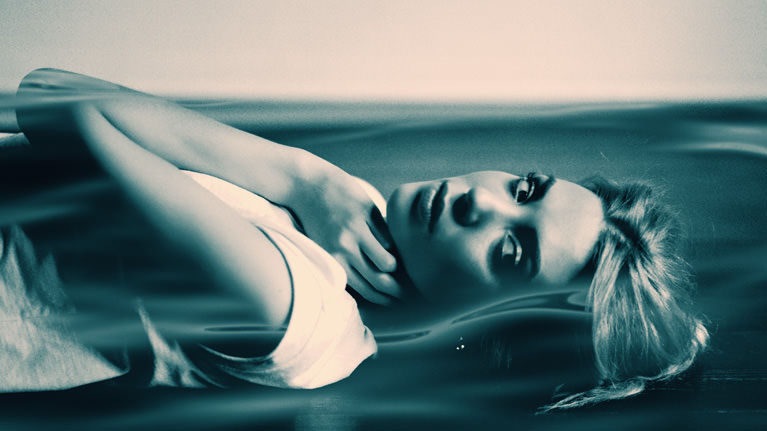

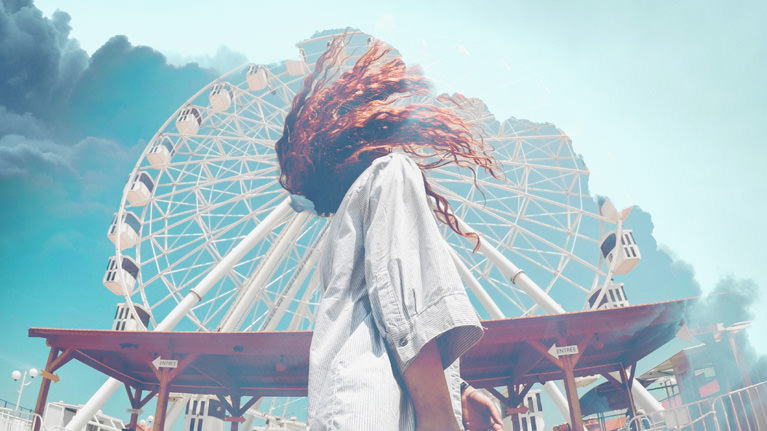
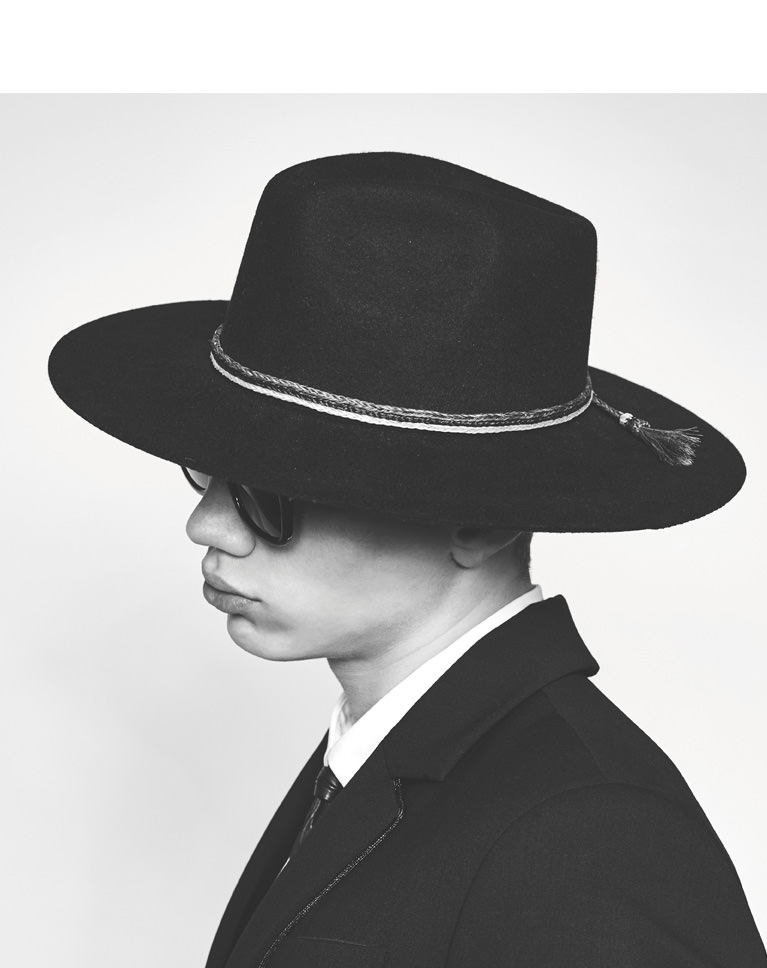

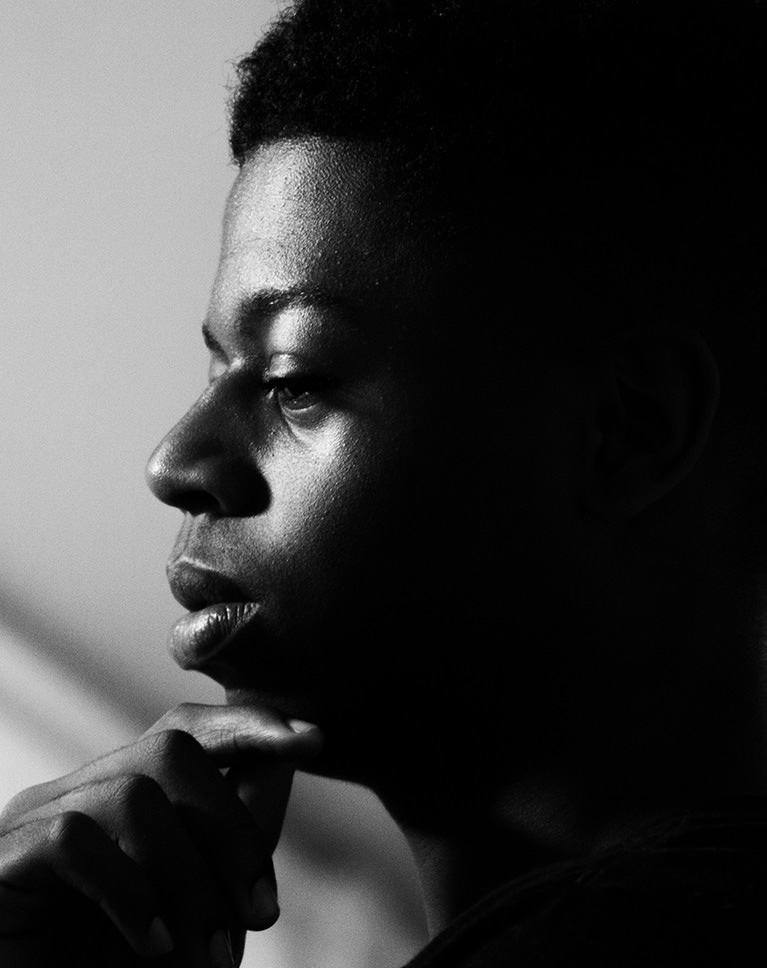
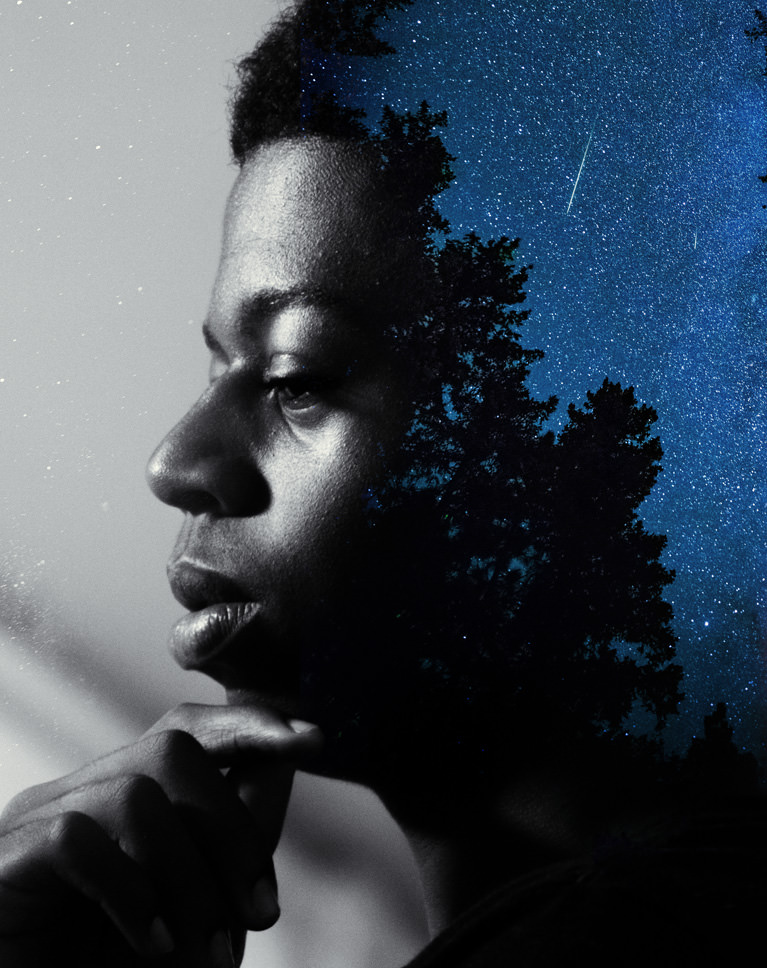
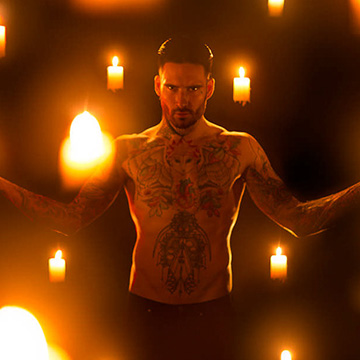

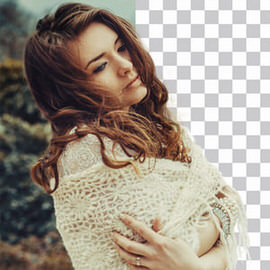
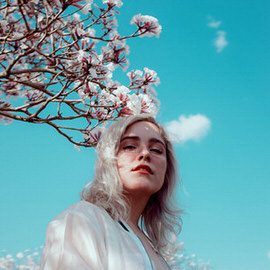
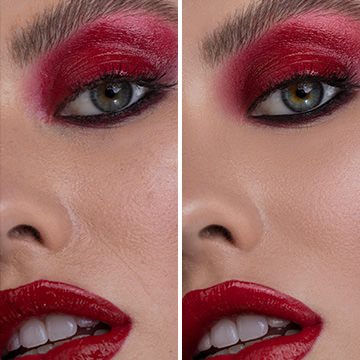

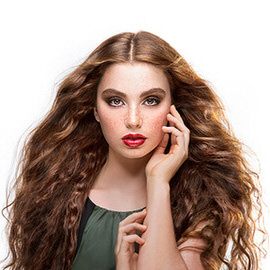

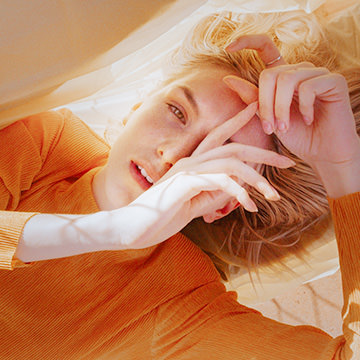
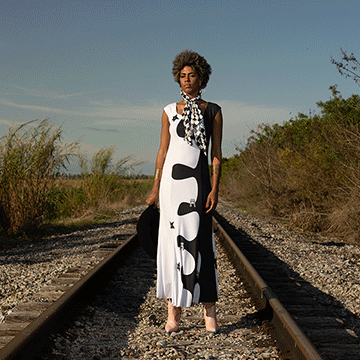


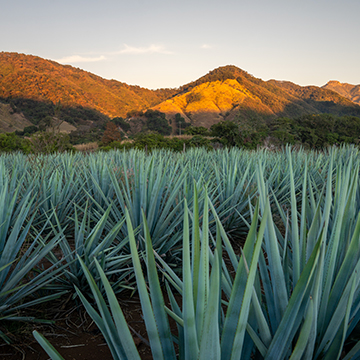

I thought the examples were excellent. And the gradual increase in complexity in forming the composites was well thought out. I think it would be great if you could include the final PSD files for each example to allow for download – they would be excellent reference tools to refer back to for further learning with all the layers being visible. Thank you.
Perfect! I have honestly spent months on numerous YouTube tutorials but when I discovered the whole PHLEARN experience, I moved up my game hugely in next to no time.
Absolutely amazing, really makes me understand how this blending works well and it something I been trying to do properly for long time. Fantastic!
I did this tutorial two years ago and just now for the second time. Got even more out of it. Excellent again.
Aaron, dude I love you. I really do. But please do me and everyone who is already at and beyond intermediate level, a HUGE favour. Stop explaining basic interface stuff in a “Pro” tutorial. You have a whole library filled with tutorials on exactly what button to click to select one, and what an adjustment layer even is. I think it’s completely unnecessary to labour on about rudimentary concepts. A simple courteous intro advising any beginner or novice that “the following basic working knowledge of the photoshop interface and functionality is assumed:”- then list them, with links to the relevant basic level videos, will suffice. And because I’m known to eat my own shoes, if I’m the dude missing out on a specific piece of basic level knowledge, then you will have put the link there for me to explore for myself and not bore the rest of my intermediate to pro level classmates. Just a suggestion. Love you lots. My impatience tonight is self-inflicted and not your fault. Cheers. Paul.
Absolutely LOVED this tutorial. I’ve tried to get this done in the past, rather unsuccessful. Thanks Aaron!!!! Onto shooting material to mingle 🙂
I really…love it so much! 😘😘
Very useful and awesome as all the tutorial are <3
Love Aaron’s teaching! It just drive me a little crazy that the layers are not labelled. Other than that, awesome!
Awesome series of double exposure. Thank you!!!
I’ve always wondered how people make those double exposures. Thanks Aaron! You always do a perfect job explaining how things are done!
Great series of double exposure classes. I’m so motivated to experiment with double exposure work now!
it’s a nice tutorial…Please make tutorial series on Dispersion effect…
Thanks a lot! This was a great thing to learn! AK
Aaron’s explanations of what he is doing as he is building each image was tremendously helpful. I am ready to try my own double exposure images knowing I can always refer back to this course.
I just can’t express how much I love Phlearn!!! I have been learning from Aaron since 2013, he’s a real MASTER!
so helpful! an excellent thorough course. i cant wait to go out and shoot content to make double exposures
As always Aaron does an incredible job of making something that looks complex much easier to understand. Now that I have gone through this course I am much more confident as I begin to work on my own images to create something even more incredible than the original images alone.
great fun, slightly addictive for the imagination. easy steps, takes some practice.
Hi….Your class are worthy ….very easy steps and easily practicable.
The lesson was really straightforward and clear, I like the style and it’s easy to follow along. Thanks!
Just finished the man and the trees. Fantastic had to share on facebook and give credit for your pro site which I put on the picture. Thank you learned so many new things. On to my last example. Can’t rave enough.
Excellent
These examples have helped me understand how to combine multiple exposures. Very clear and complete directions. Thank you! I like your style of teaching!
As ever a great tutorial. What happened to the Urban Explorer birds? Did I miss something?
I was trying this for long time make my mind clear about how to edit double exposure and here Phlearn plays turning point in my life. this tutorial helped me to get cleared about double exposure. you are amazing.
Exposes the power of blending modes with light/dark images for creative design. “Man & Woods” is a serenely beautiful composition.
I mostly never write reviews as I find them to be boring :p, but when it comes to this course, I cannot but not write a review. This course is beyond amazing. Trust me, Beyond Amazing 🙂
A great tutorial that produces some wonderful professional looking double exposure images.
Great tutorial. Really shows how simple the technique can be, yet how stunning the result can be.
Great totorial, Aaron! Many tricks and good technics to explore with my photos. Thats a good way to enhance someone message thru the images! Congratulations!
This is a real cool, quick, and easy tutorial to help you build your confidence in doing a rather intimidating technique. In proper Phlearn fashion, Aaron totally demystified double, triple, and quadruple exposures in the simplest way possible. It’s very specialized and specific, so he’s able to cover many different situations and how to approach them. This is probably going to be the most productive 1.5 hours of my weekend!
Phantastic tutorial, with straight to the point blending examples, and very useful and clever approaches! One and a half hour of dense content. It is totally worth it.
As with all his tutorials, Aaron did a good job explaining and making watching fun. The techniques used are well explained. The examples are good starting points to begin creating my own double exposures experiments. Great job again Aaron.
Great tutorial. Tricks and PS tips all at once. You’ve set me off in the right direction. Thanks.